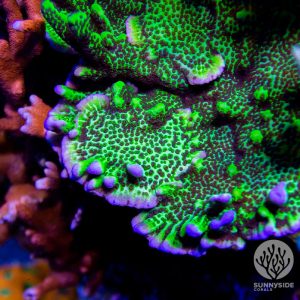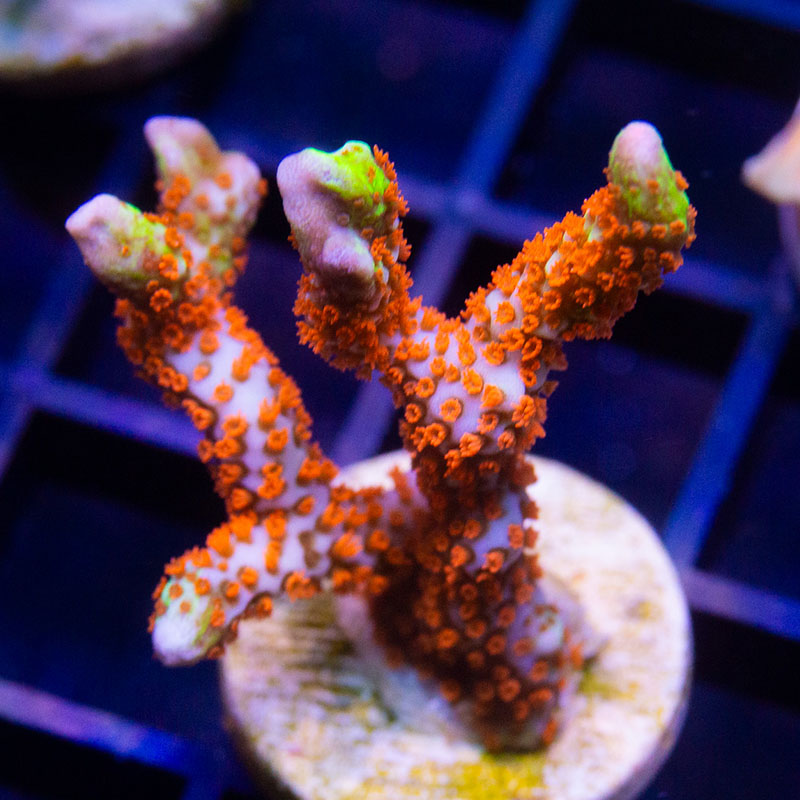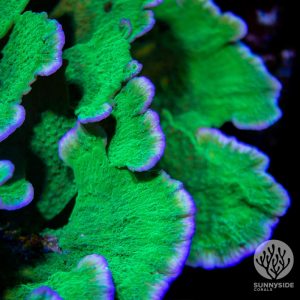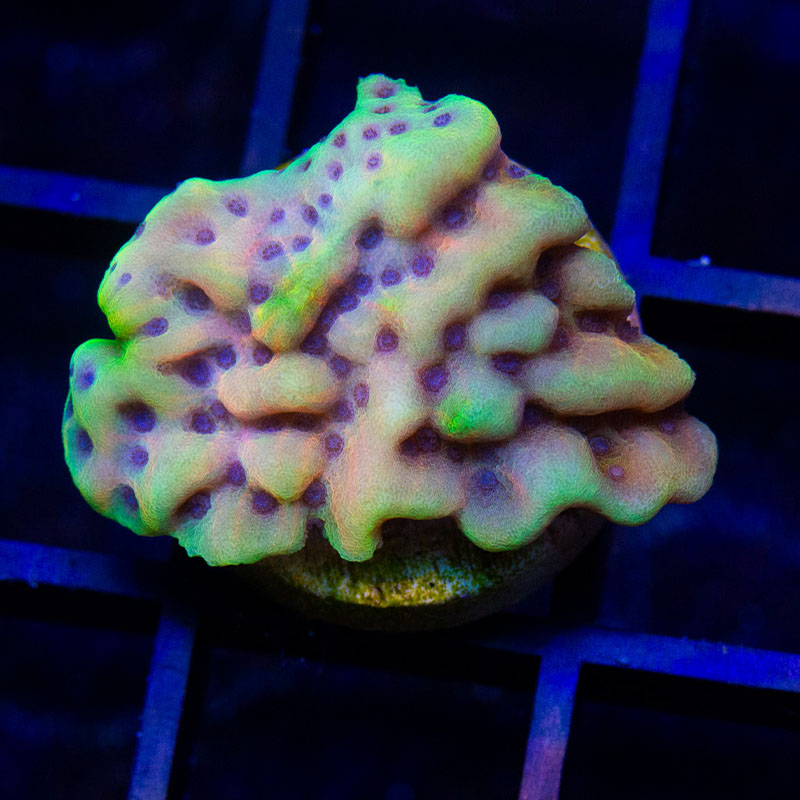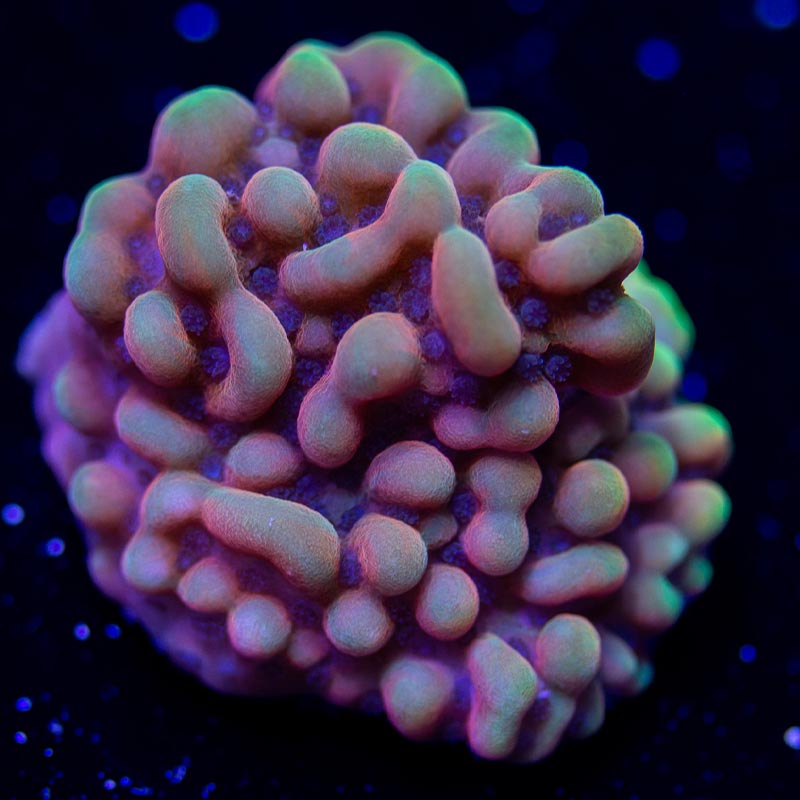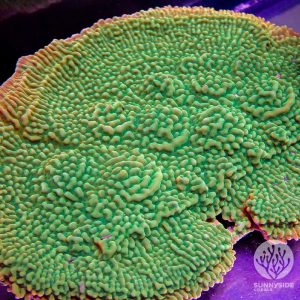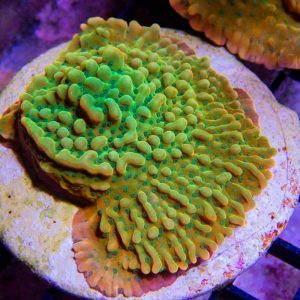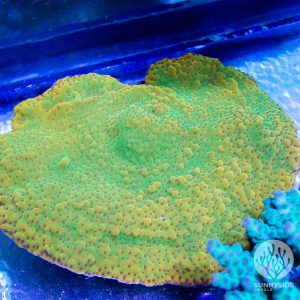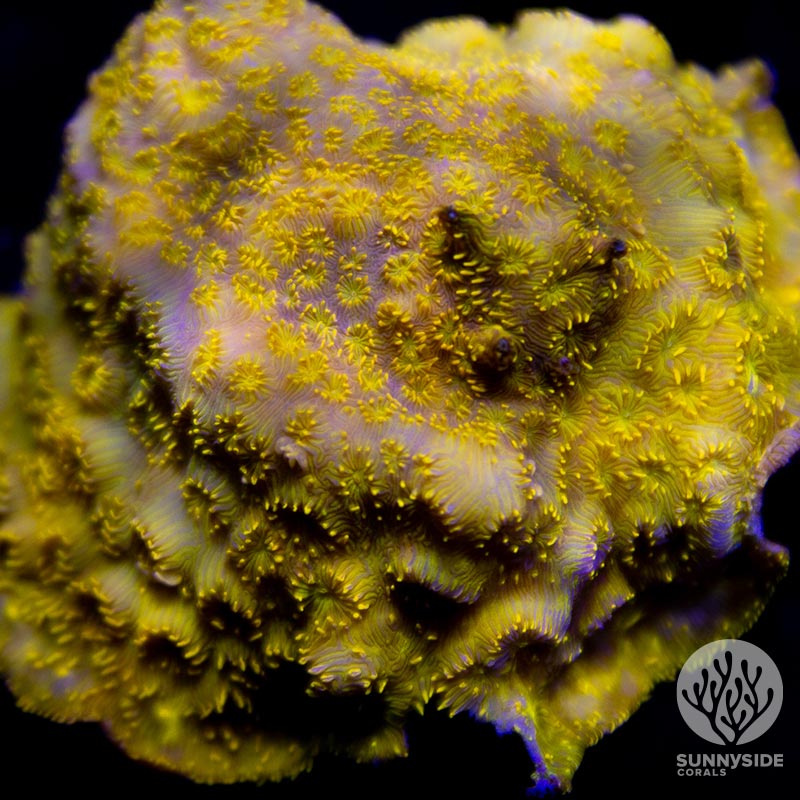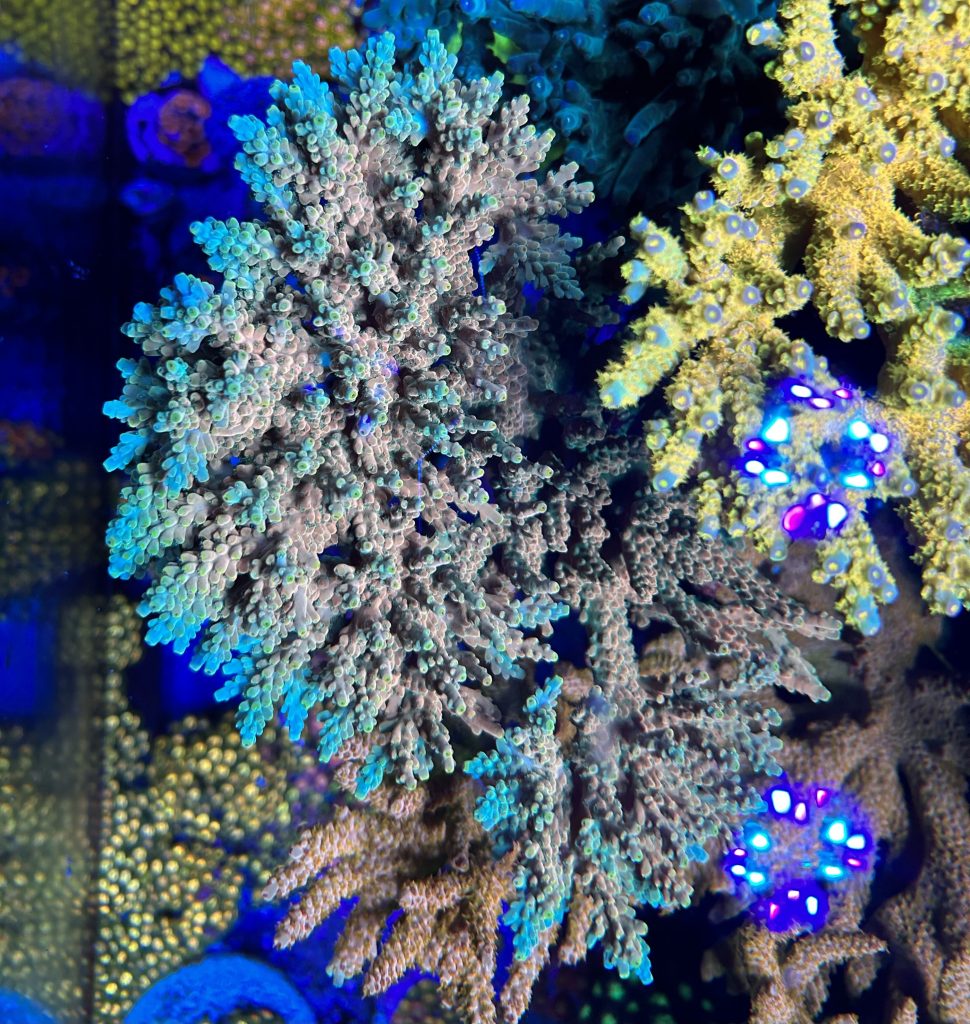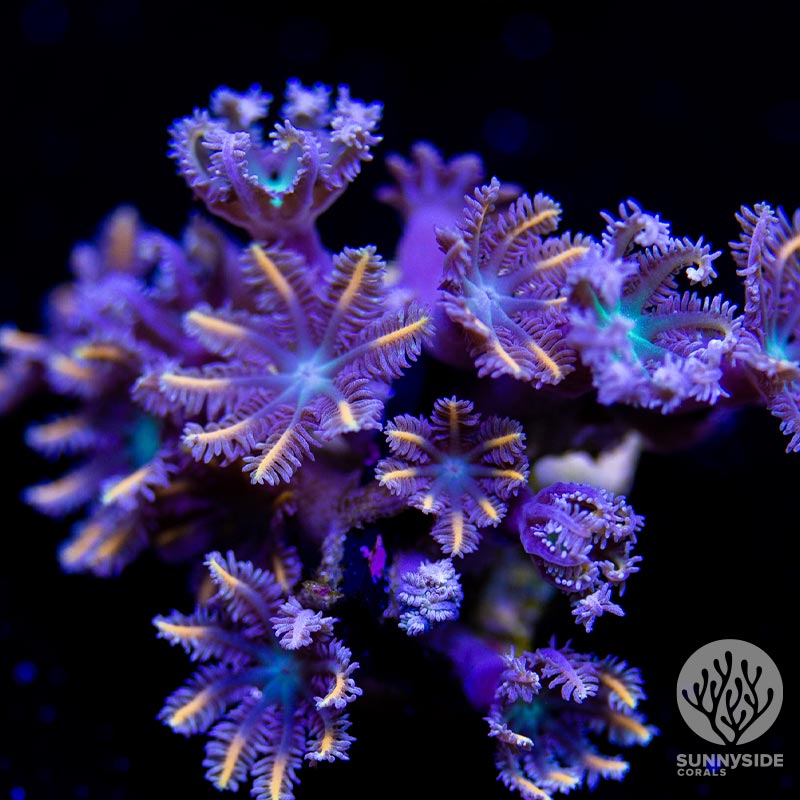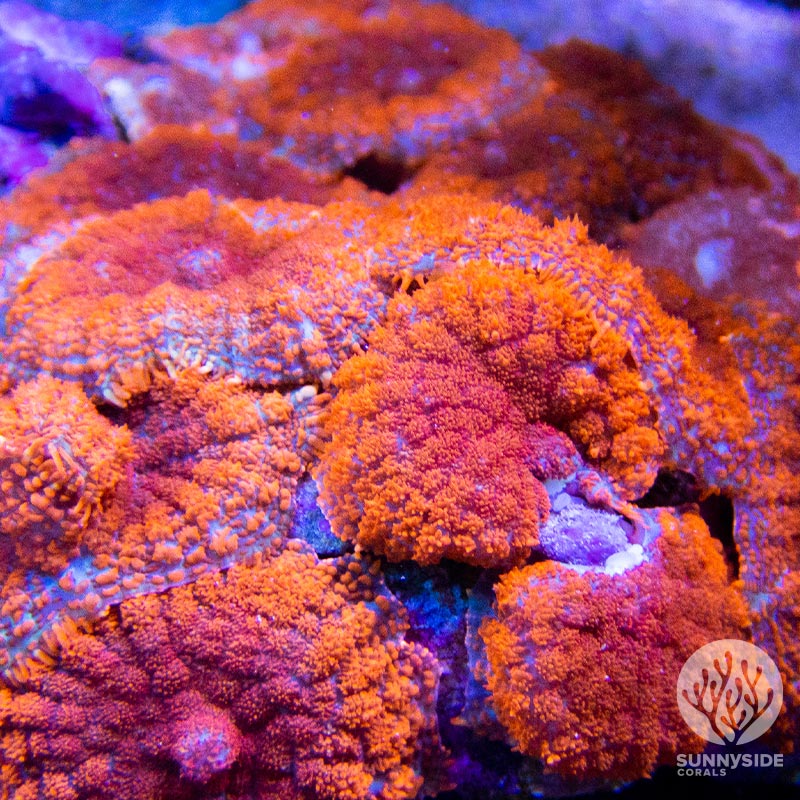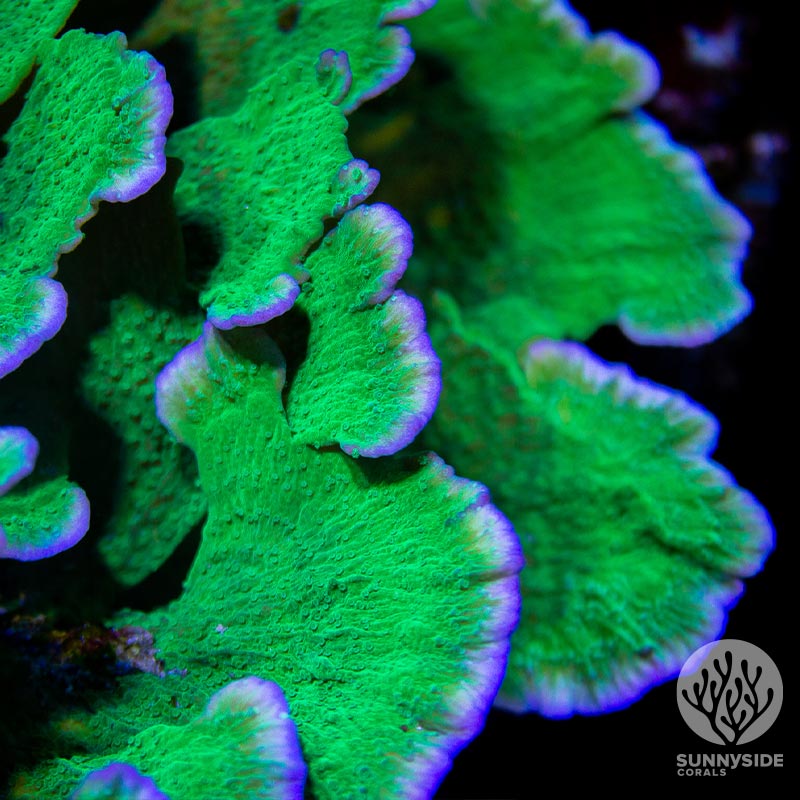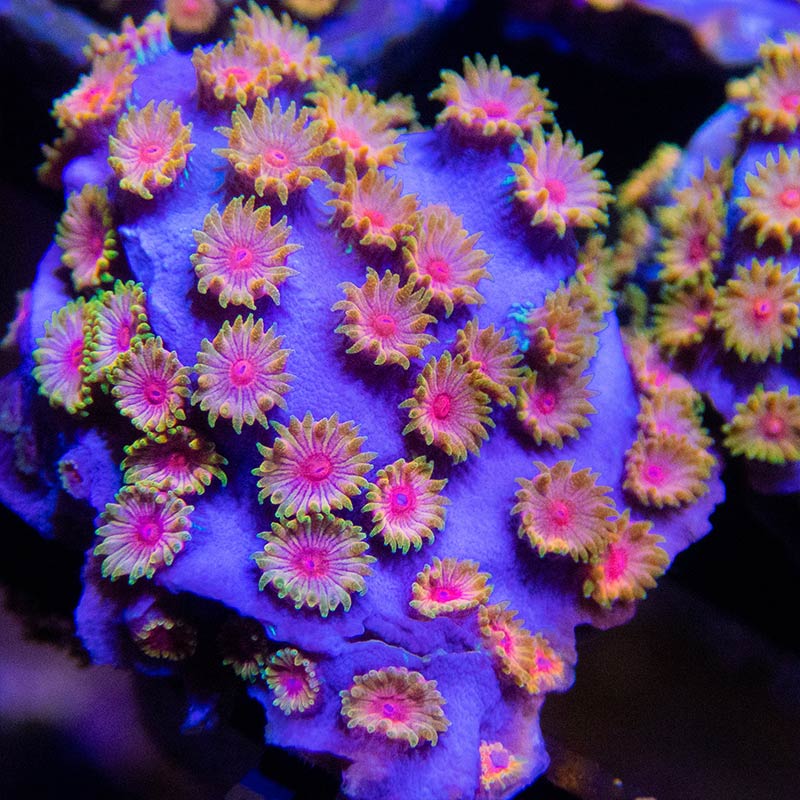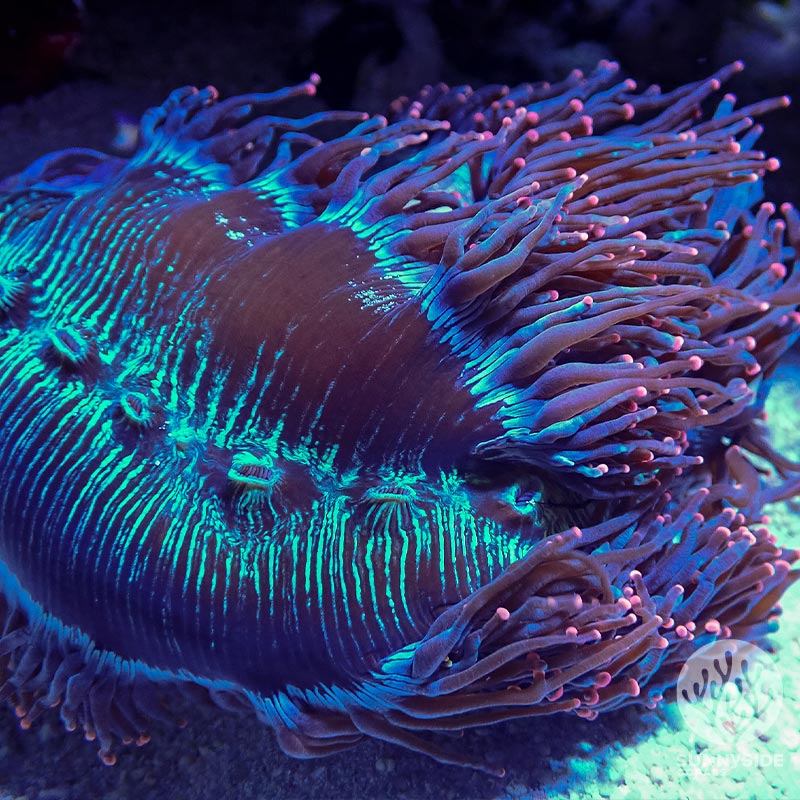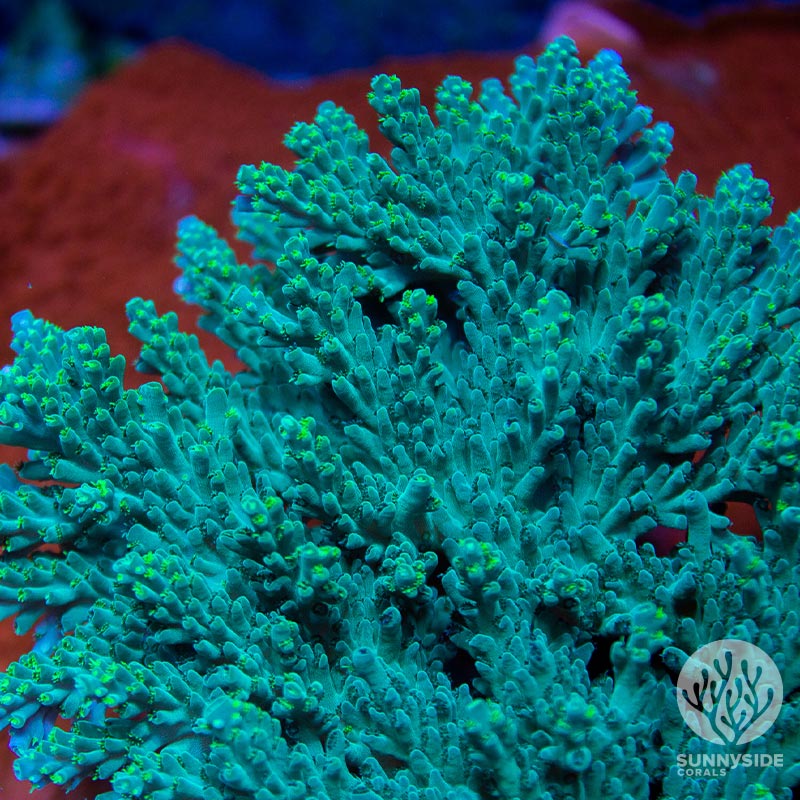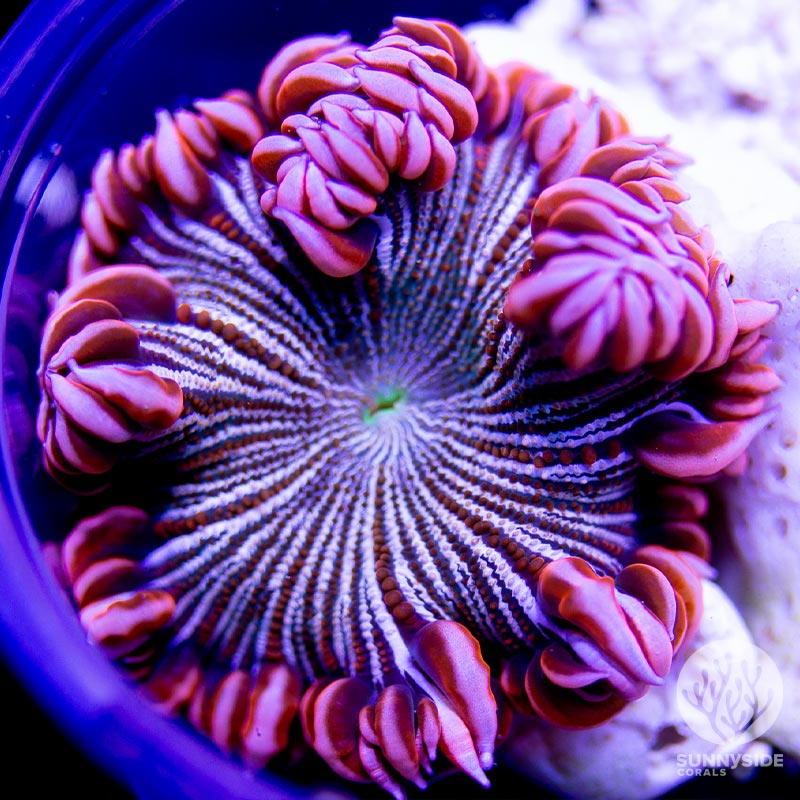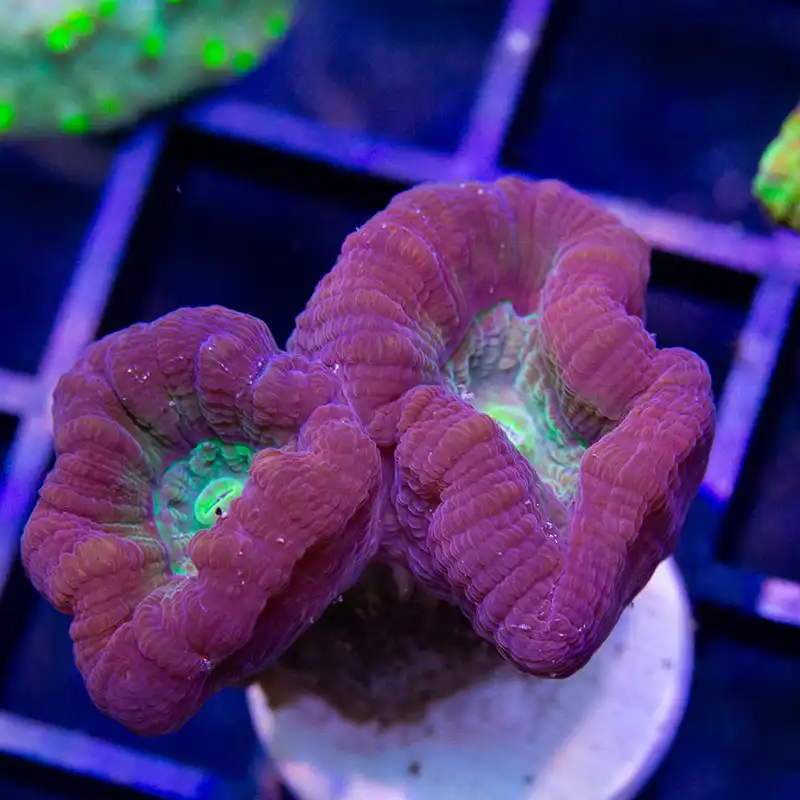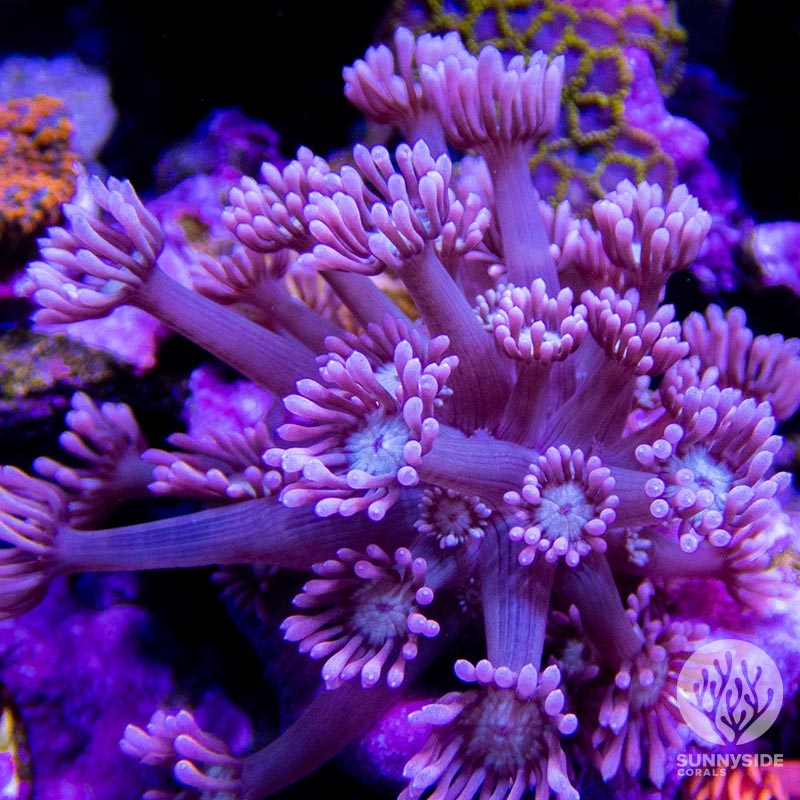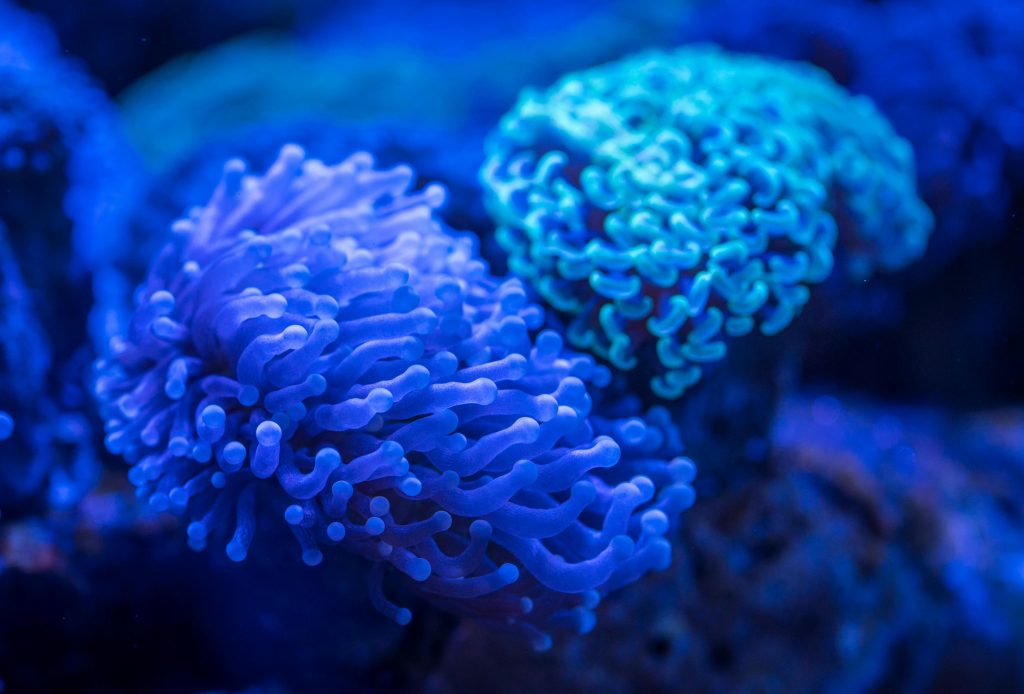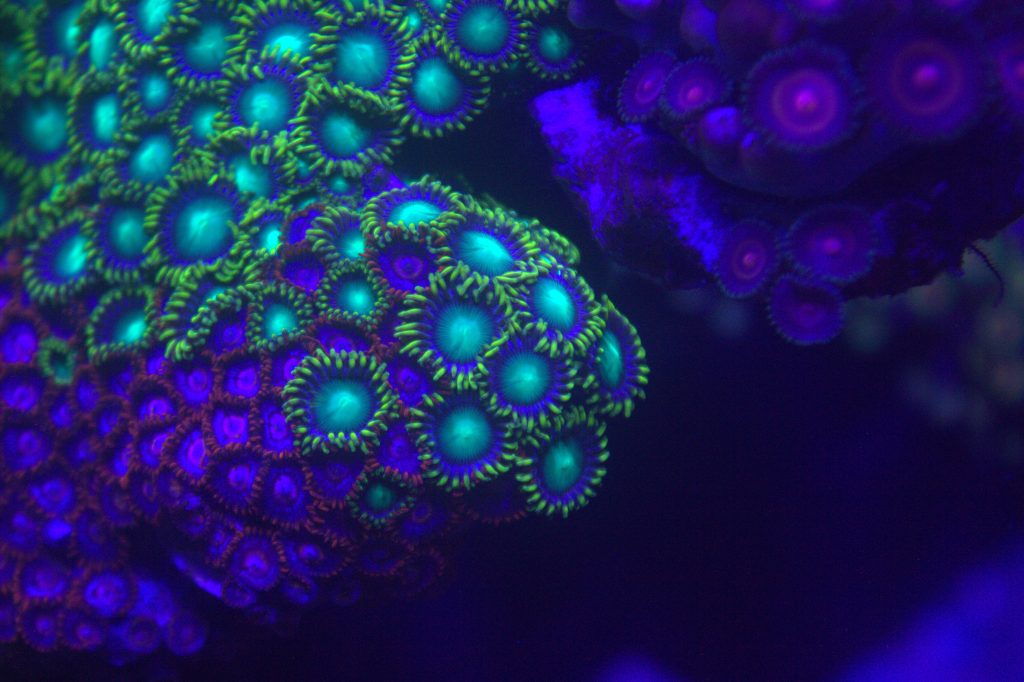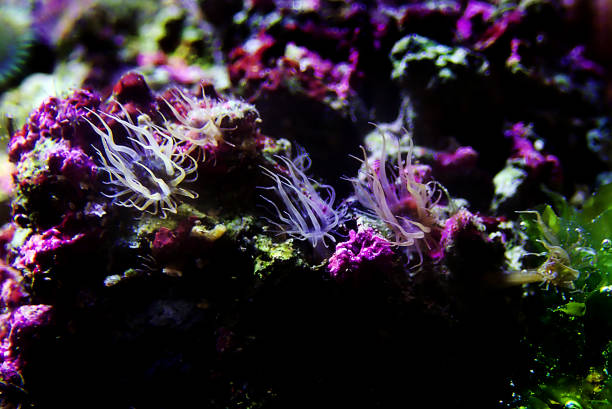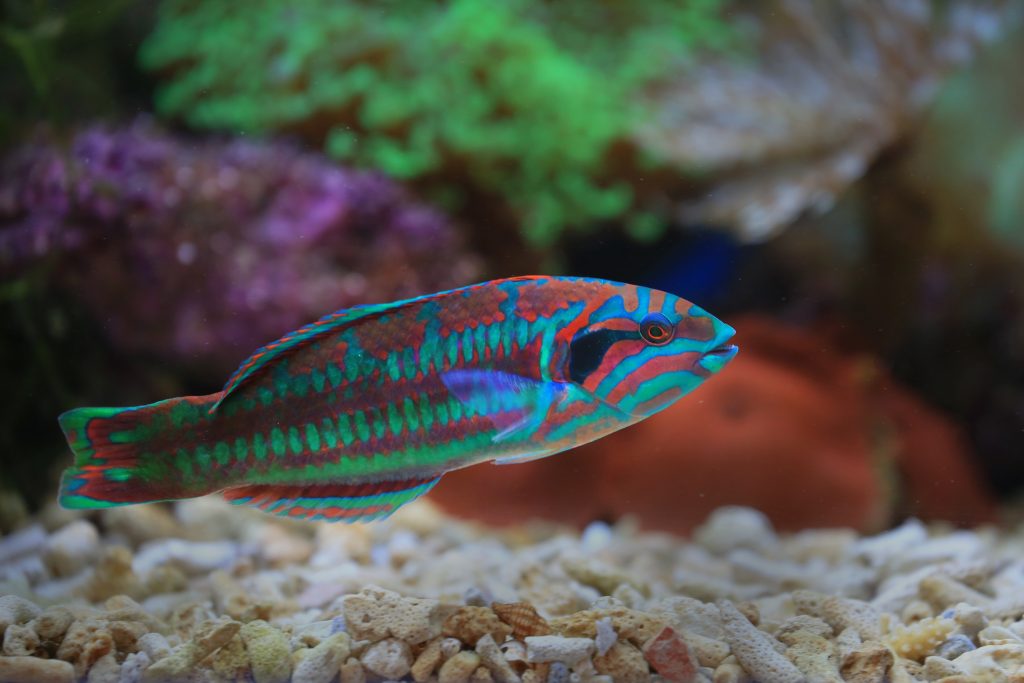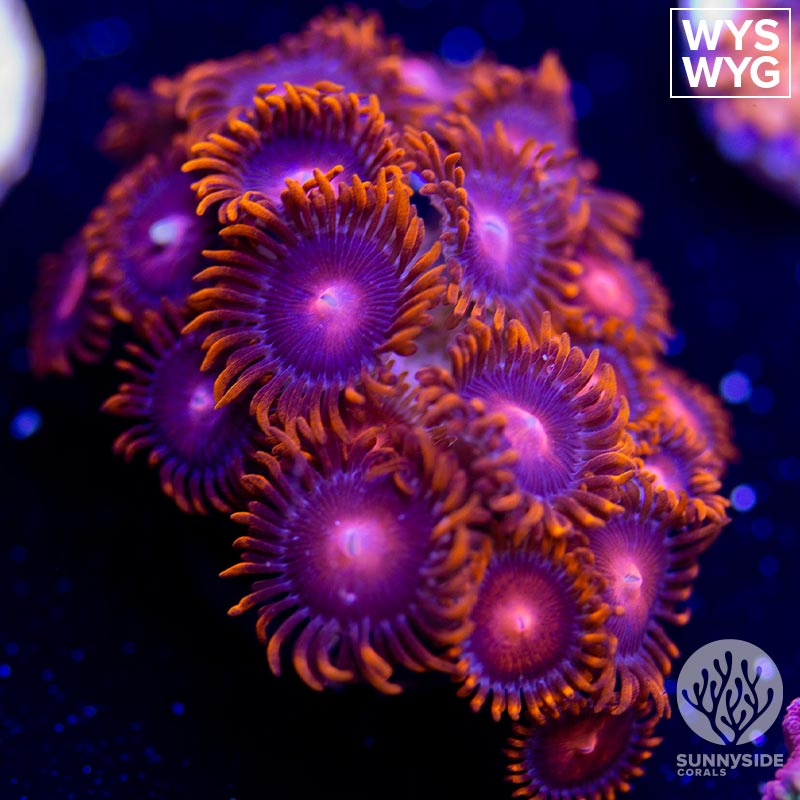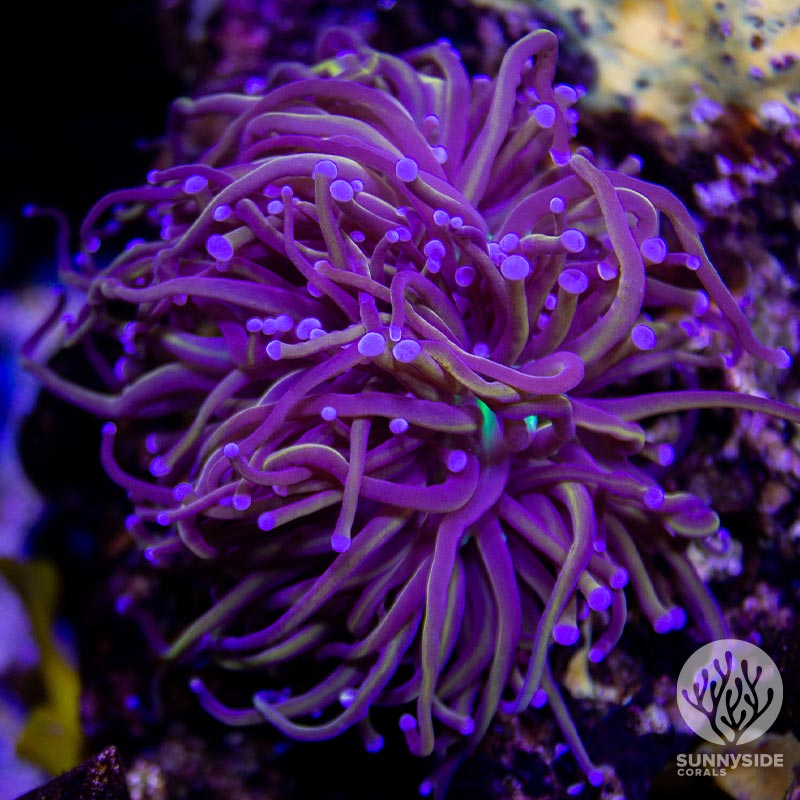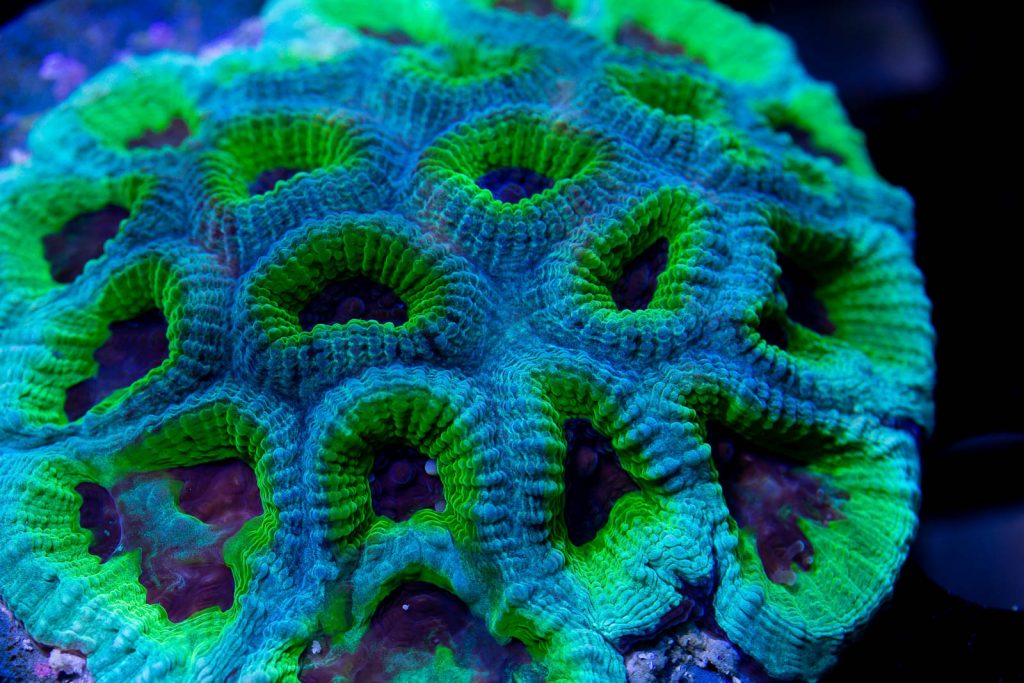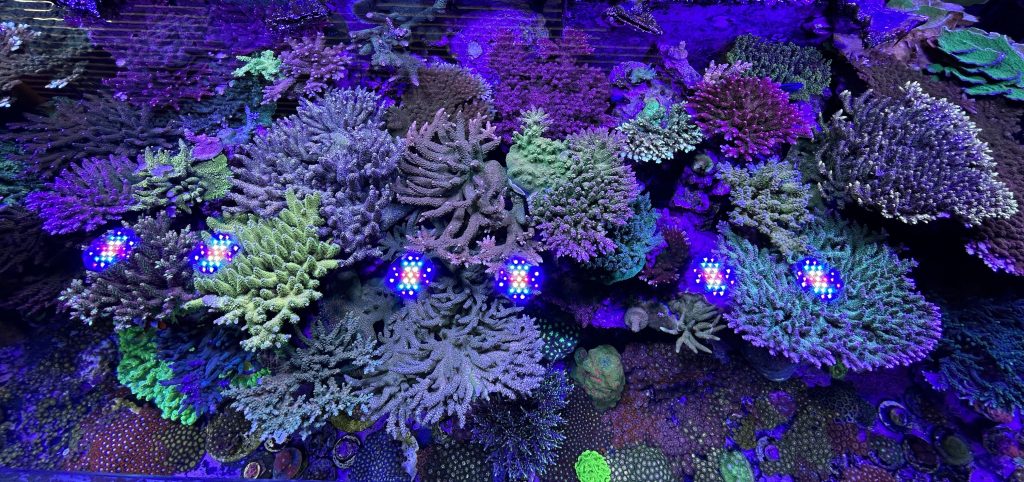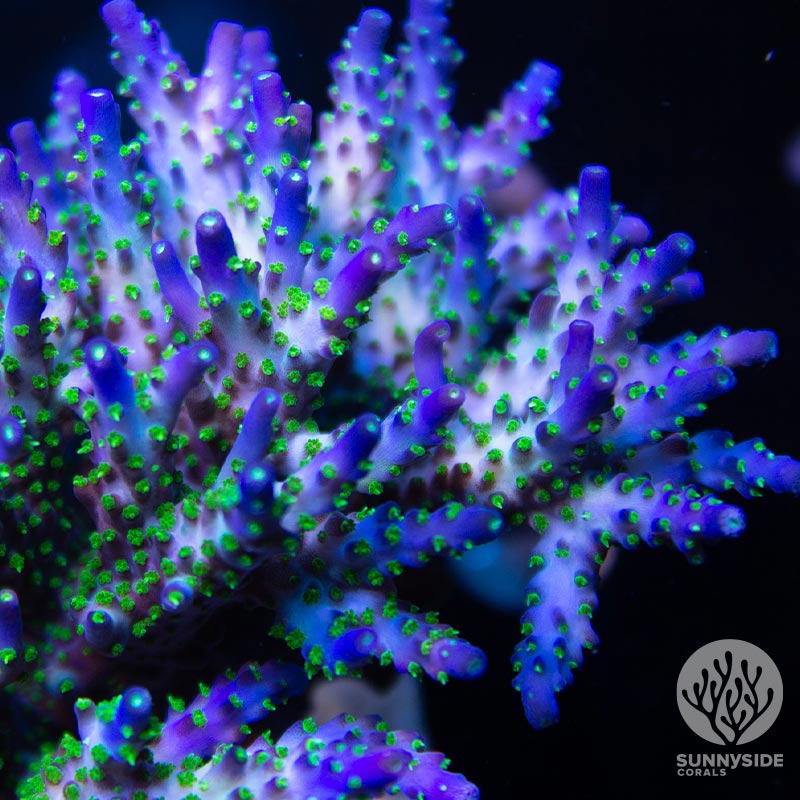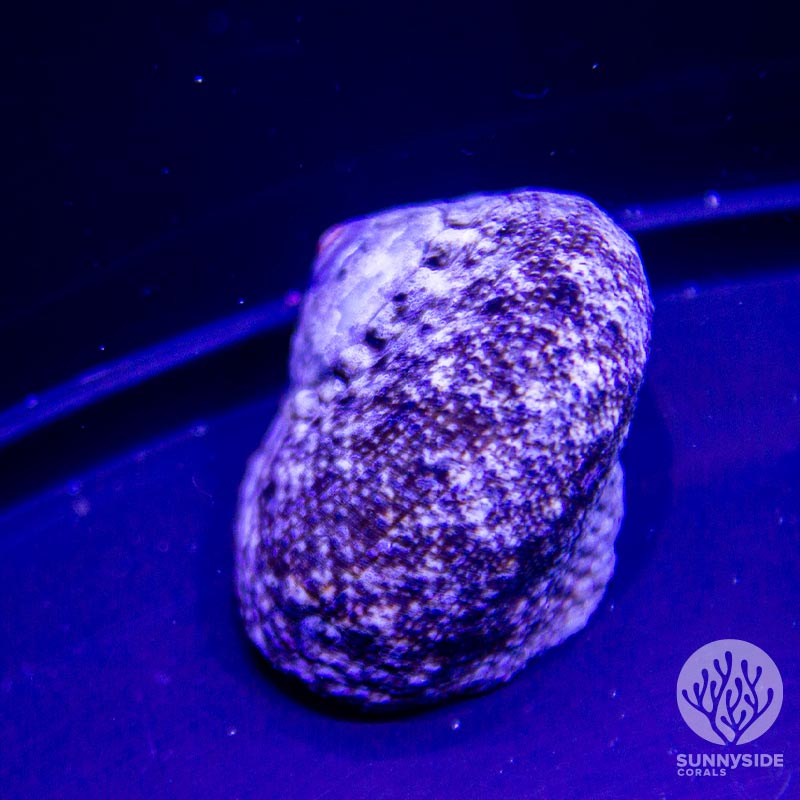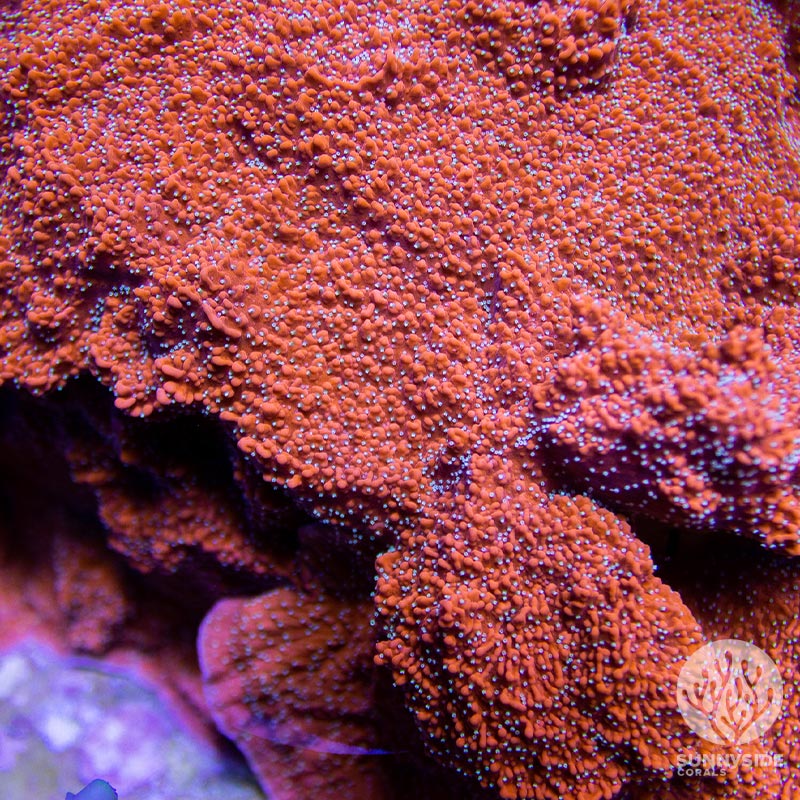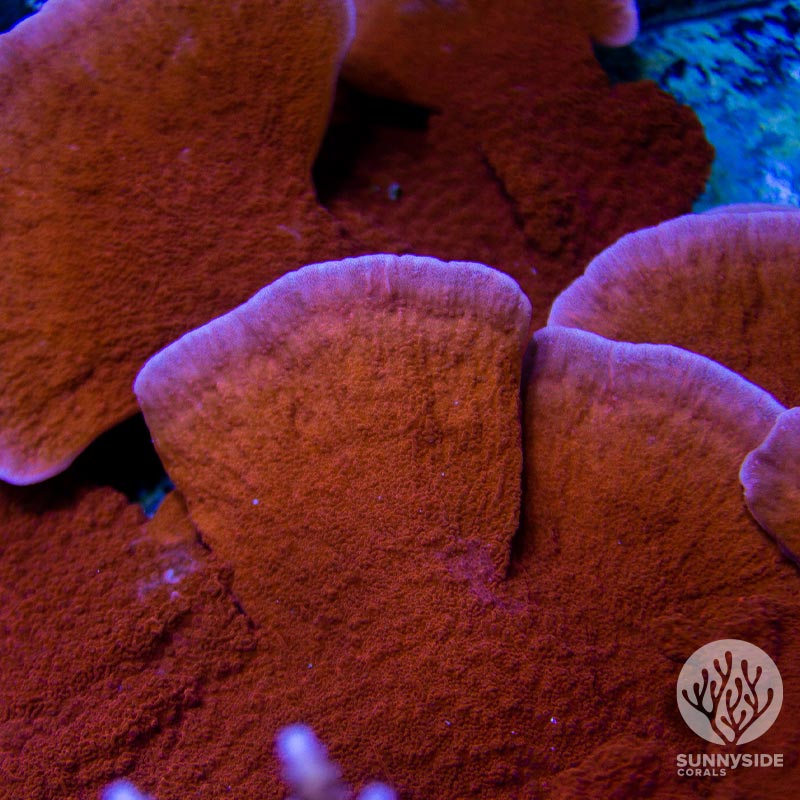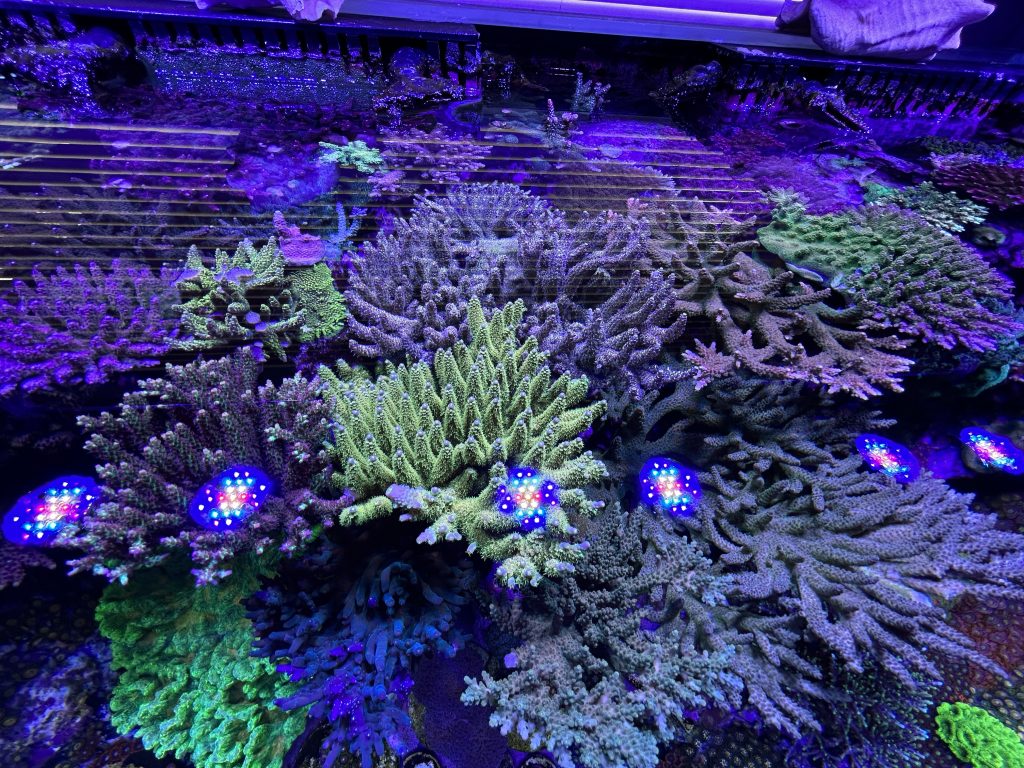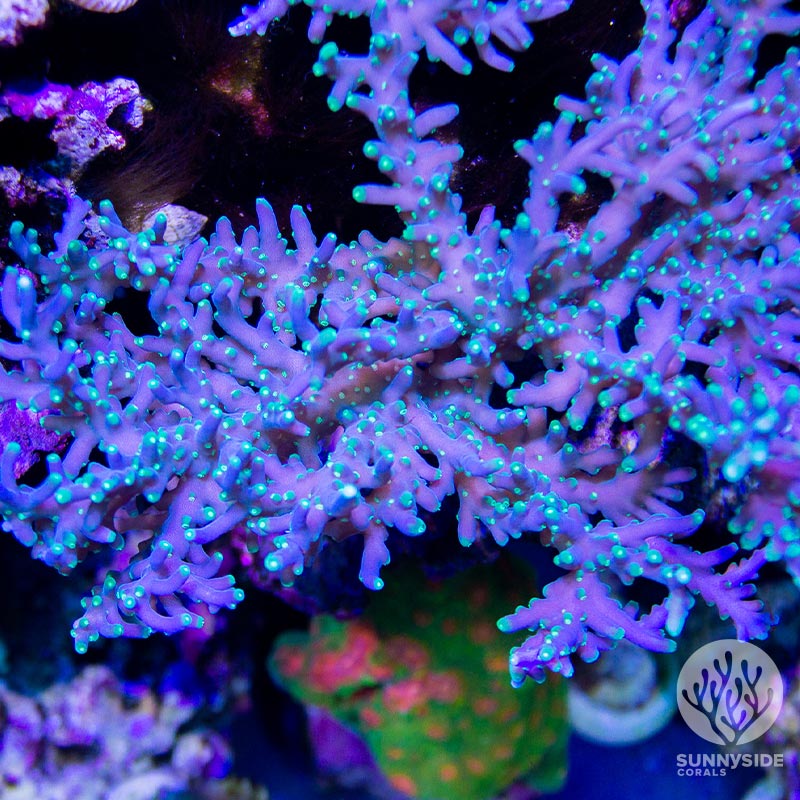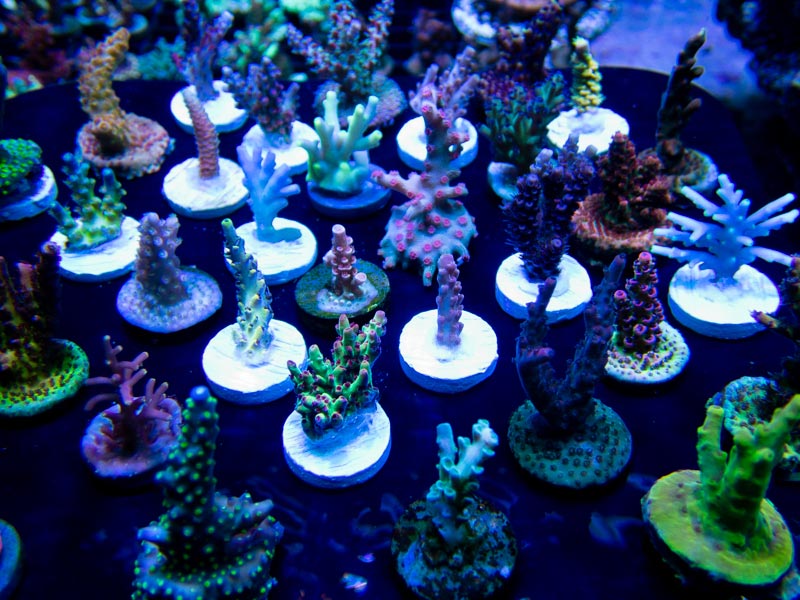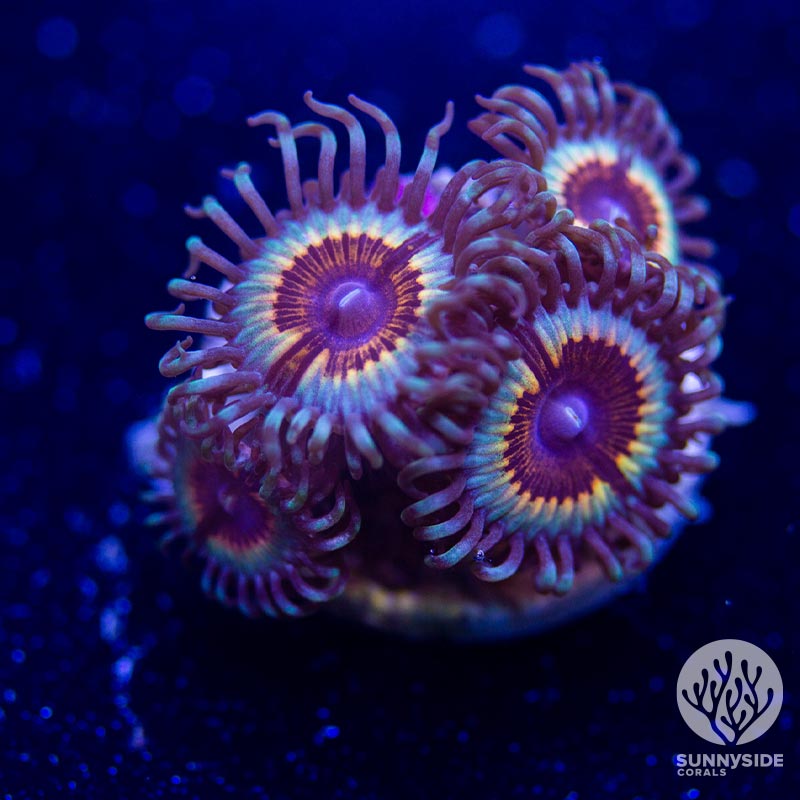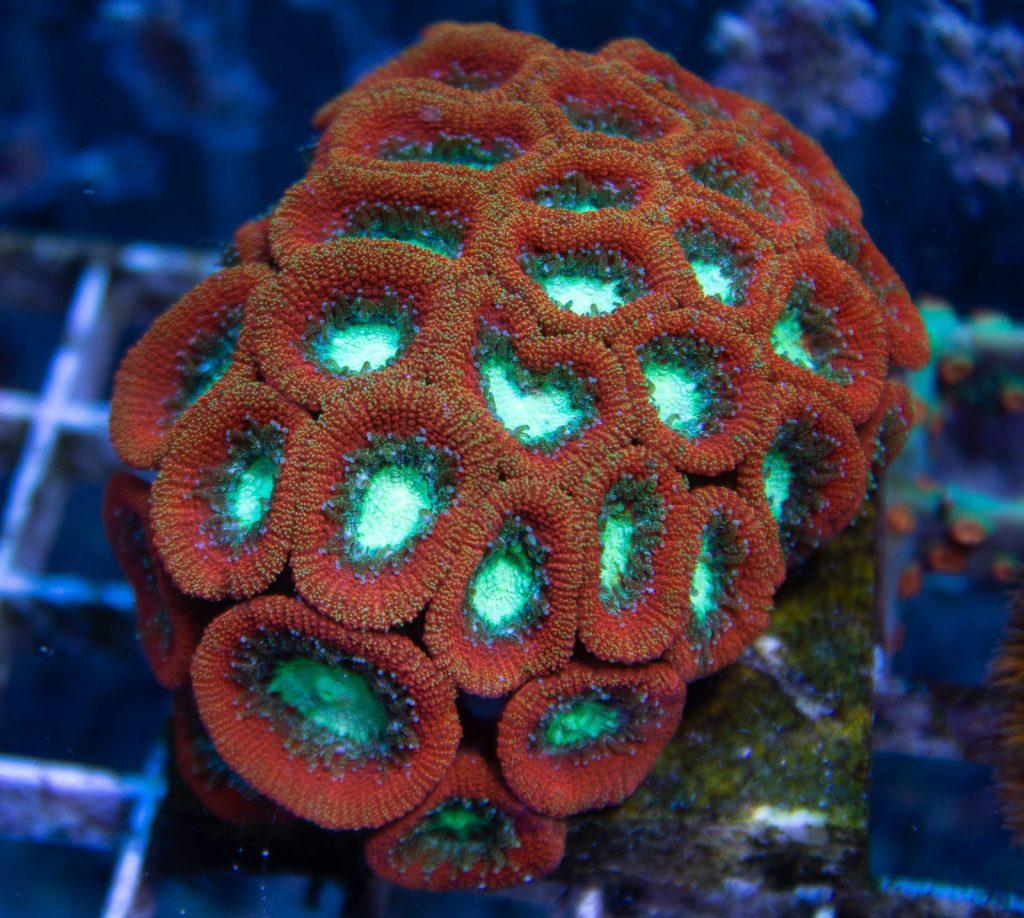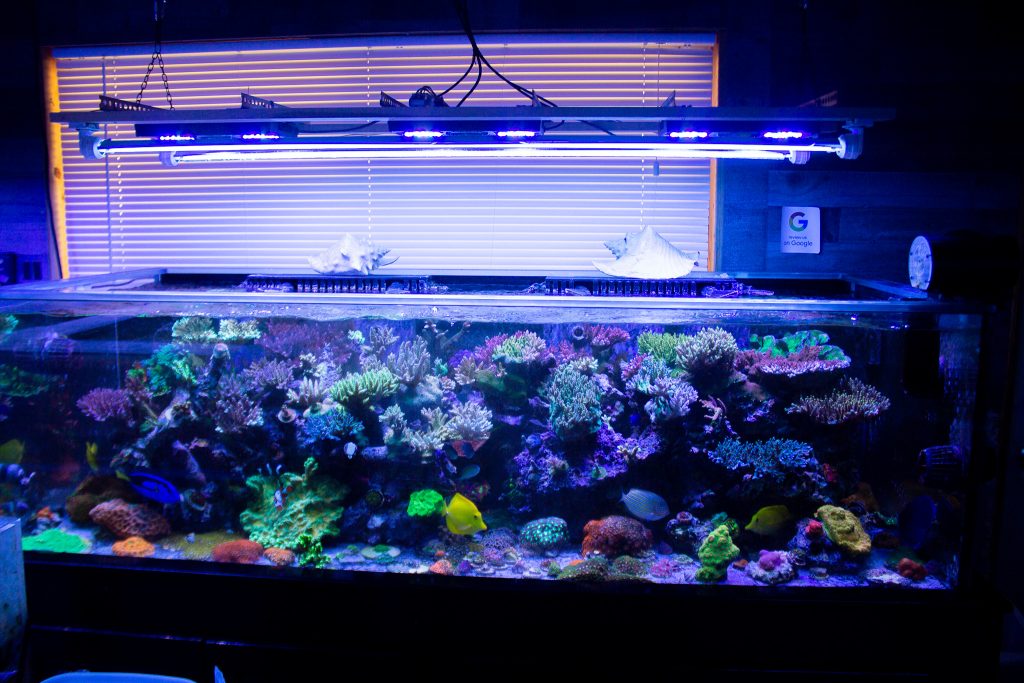Montipora or “Montis” are a great way to try your hand at SPS (Small Polyp Stony) corals. Montis can be really good growers and can be very resilient. This makes them great for beginners, wanting to try their first SPS coral. With a wide variety of options to choose from, they are one of the most popular types of SPS corals for good reason. For those who are ready to start growing Montiporas, here is a guide to everything you need to know about Montipora coral and its care.
What are Montipora Corals?
Montiporas are found in various reefs around the world such as; the Mediterranean Sea, eastern Africa to Australia, and even the Hawaiian Islands. Montis have 3 main growth patterns, plating, encrusting, and branching. This is a great type of coral to provide shade to corals lower in your tank and add unique eye-catching growth structures.
This type of Montipora has a unique branch-like growth pattern. They are perfect for adding a little structure and depth to your tank like an Acropora would but with a little hardier of a coral. Digitata are one of the best beginner SPS corals you can get. They are typically faster growers and are hardier than most sps corals. Some of our favorites include the Bubblegum Digi and our Orange Digi.
The Montipora Capricornis or the monti cap as more commonly referred to is one of the favorites in the hobby. As this type of monti grows, it begins to form plate-like growth. As it gets larger it will form layers of circular bowl-like plates. Some of our favorite Montipora Capricornis are the WWC Grafted Cap Monti and the Leng Sy Monti. Both are good growers and add a lot to our tanks.
One of the best ways to cover your ugly rocks is with encrusting Montipora. Encrusting montiporas come in a huge variety of textures, colors, and growth speeds. This type of Monti typically grows really well and is very resilient. We have had some encrusting montis appear to be dead only to color back up a month or two later. Some of our favorites are the JF Beach Bum Montipora and the Mystic Montipora.
Montipora Coral Care
How we manage our systems
Acros are very sensitive to water chemistry and are also very demanding in regards to lighting and flow. So much so that their coloration can change from tank to tank because of the slight differences in their systems. No need to worry though. You can find the right color with appropriate adjustments to your system and a little patience.
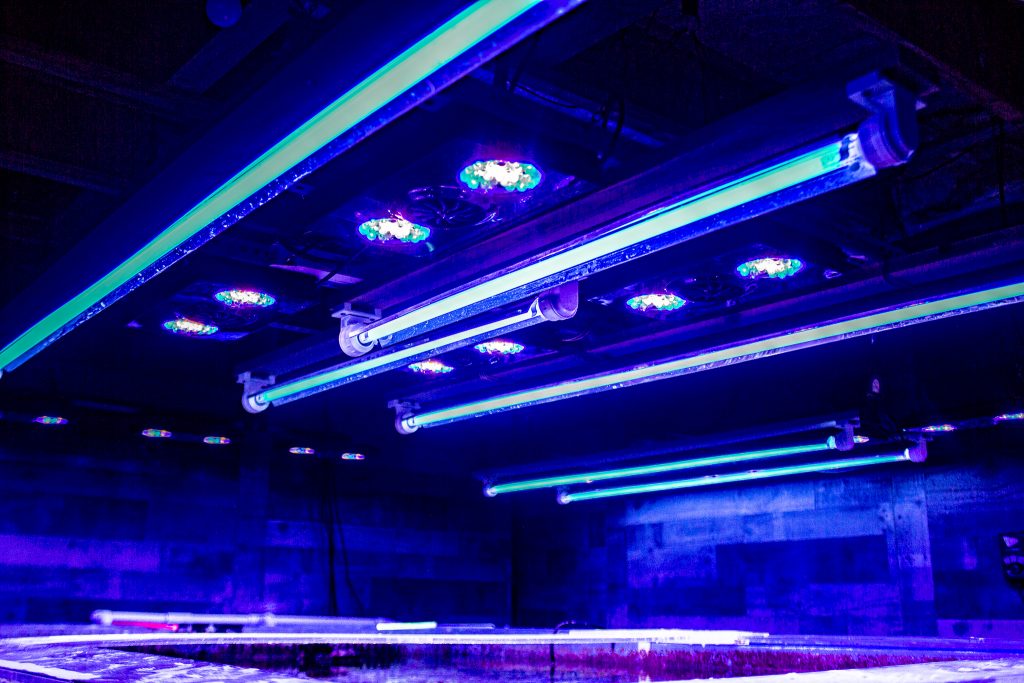
How much light do Monti coral need?
Quality lighting is extremely important for growing Montipora and getting good coloration. Montipora are photosynthetic and tend to be very light loving. At Sunnyside Corals, we grow all of our corals under both T-5 lighting and Radions. We run our lighting on a modified AB schedule with our T-5s and Radions. Depending on the type of Monti, we typically keep them at the bottom or in the middle of our tank. The plating and branching Montipora do better towards the middle and can provide shaded areas for corals lower down. While the encrusting corals typically do best lower down in your tank. Make sure to test what works best for your specific Monti, sometimes a little higher light can help bring out the colors. but you do not want to overdo it or you might end up bleaching the coral. We keep the PAR level of our Montis similar to that of our Zoas, around 100-150 PAR. The main reason we do this is because once a Monti is happy their growth rate is very fast. Keeping them at a slightly lower light slows down the growth, but we also still see very dark and rich colors at the lower light levels.
Flow Requirements
Montis generally need moderate to high levels of flow. Having the right amount of flow is important to keep sand and detritus from settling on your Monti and stunting growth or even killing them. Do not forget to vary the amount of flow in your tank throughout the day. This helps promote healthy growth and is closer to their natural environment. Some things to consider when it comes to flow is the growth of the colony and organisms that love to grow around your pumps. As a colony grows, the flow around it will change. Pay attention to the needs of your colony and if it needs more flow or if it needs to be pruned back a bit to allow more space for water flow. As far as your pumps are concerned, make sure to take them apart and have them cleaned/ serviced regularly to ensure that nothing is messing with your flow output. We run our Montis with a mid to high flow using MP40s in our systems. Our Montis are generally placed along the bottom of our tanks as well.
We like to run the flow in our tanks high. For our 200 gal display tank we run about 125x using 5 Mp40 Ecotech pumps along with a small non variable speed in the bottom back corner of the tank. In comparison, our 4×6 ft frag tank runs on the same system but uses 3 Mp40 pumps on one side that runs flow above the frags while the other side runs 2 Maxspect XF280 Gyre pumps; which rake across the bottom under the racks. All our pumps run on a varied schedule that dips down at night – to about 15%- and runs on a combo of reef crest and tidal flow during the day -at about 60%. However, we do run our pumps for a couple hours on full blast around noon for nutrient export. All of our pumps are placed strategically in our tanks to allow for good flow without directly hitting any of our corals.
There are two final things to take into account when it comes to flow performance in your tank. The first is the growth of the colony itself. Large colonies will cut down the flow and should be accounted for when setting up your flow levels. The second thing is that other organisms grow around your pump so it is important to keep up on regular maintenance and cleaning.
How to place Montipora
Make sure to place your Montis close to the bottom or middle of your tank where it can receive the right amount of light. Typically somewhere, where the Monti can receive medium to strong amounts of flow, is best, not directly under a pump. Montipora will grow almost anywhere and will cover what you place them on. This can add a lot of depth and variety to your tank. Be creative and have fun watching your Montipora add some color to your tank.
Placing Monti Caps
Monti Cap placement can be tricky. They create a shelf-like structure that can block the light from reaching corals below it. Try not to place it in locations where you have other corals below it, or would like to have corals below it.
Placing Encrusting Montis
Encrusting montis grow outward in all directions. They can be a great way to cover your ground or rocks. Placing encrusting montis on smooth, flat surfaces will help with optimal growth. With placement, keep in mind that as the coral encrusts, that surface will no longer be available for other coral placements.
Placing Digi Montis
Digi Montis are more of a branching coral that builds flat, fin-like structures. The main thing to take into consideration as you place these corals is that they will block light and water flow as they grow. Make sure to place them in an area where this will not affect the surrounding corals.
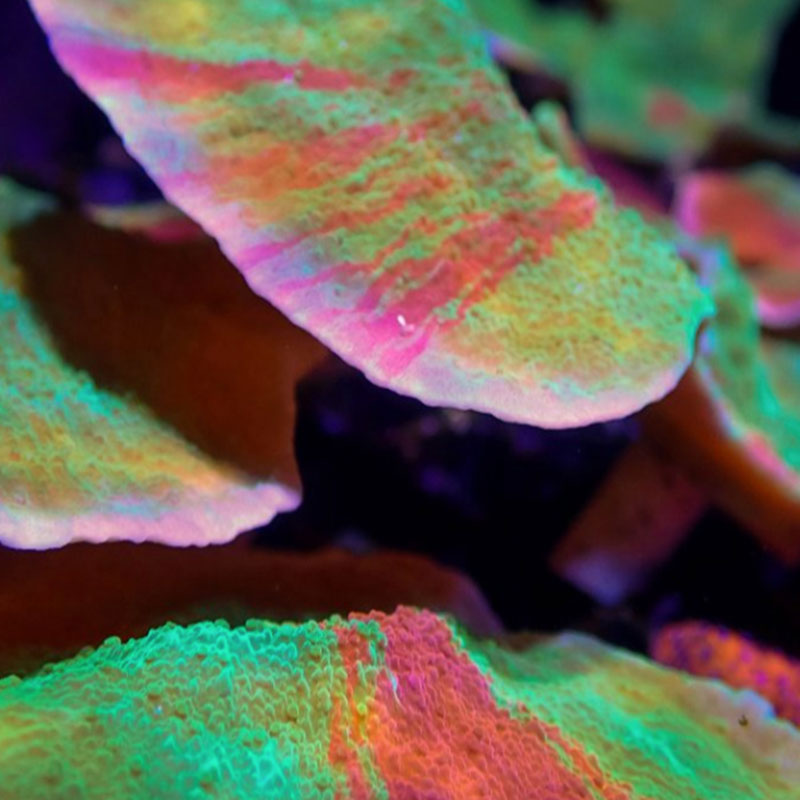
Feeding Montipora
Montipora do not require target feeding as most of their nutrients come from lighting. However, that does not mean they do not require some type of feeding. Montipora polyps are able to capture smaller, particulate-sized foods through broadcast feeding. Three sources of foods that work well for them are amino acids, small zooplankton, and having fish present. If your Montis are looking a little drab but your water chemistry and lighting looks good, there is a chance that your coral might just be hungry. At Sunnyside Corals we keep fish in all our systems and broadcast feed with a variety of foods. We use automated pellets to set our baseline and supplement that at random with a variety of frozen foods. Some of those include: LRS reef frenzy frozen food (pe calanus), Hikari (spirulina brine shrimp), and reefroids and benepets. We will also use nori and flake food occasionally. There is no set feeding schedule, but typically we will supplement with frozen once a week, then a few days later we might use powder and then a few days later do flakes/ nori. Occasionally we also dose with aminos. All of this is based on our current algae levels. If algae levels are high then you are overfeeding.
Water Parameters
Water parameters are always a key part of growing any coral. Montipra can be surprisingly hardy corals however they do best in cleaner systems. This means that the Nitrates and phosphates generally need to be lower. The most important thing though, is that you keep your levels stable. Montipora can get stressed and lose all of their colors very quickly when tank parameters start to fluctuate but often come back once parameters stabilize. Look into
automation tools such as dosers, refugium, and calcium reactors to help stabilize your tank levels. We aim to keep very standard levels in our systems.
ALK: 9
CAL: 420
MAG: 1400
Salinity: 1.025
We also use automation tools to help keep these levels stable. Our two main systems utilize large, commercial grade calcium reactors. We run a KALK reactor to keep ph up on both systems and we run a zero mag in the calcium reactors to keep the magnesium stable.
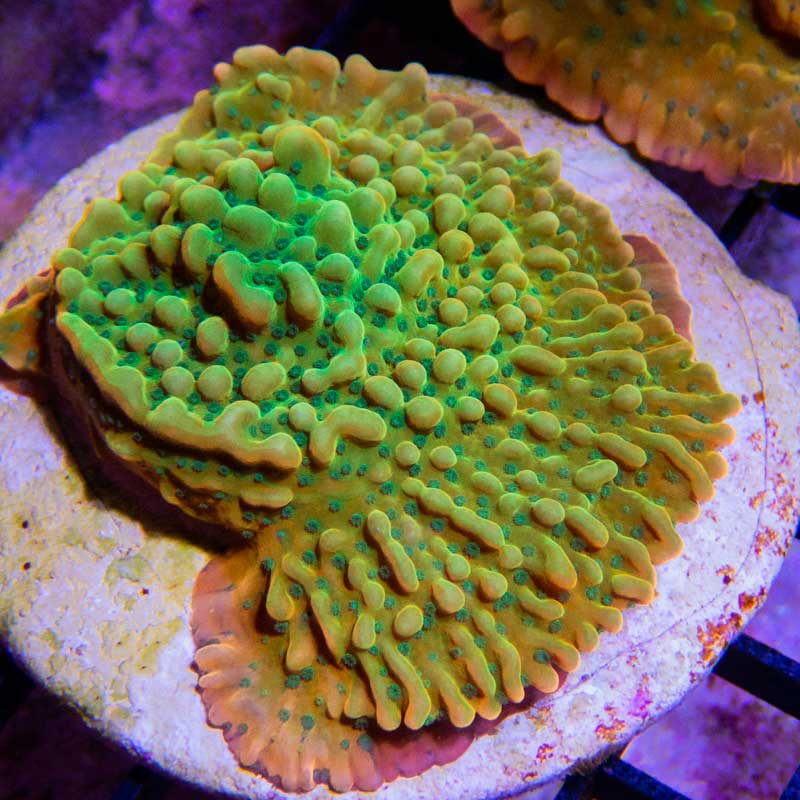

How to increase Growth
The key to increasing growth in your tank is to make sure your tank is consistent. Once you find a spot in your tank where your corals are happy, do not move them. If you keep your parameters consistent and have adequate light and flow, your corals will start to thrive.
The care requirements for Montipora vary to some degree because of their diversity. Some species are hardy and fast growing to the point that they can overgrow an aquarium such as the ubiquitous orange plating Montipora capricornus. Other variants are slower growing and more sensitive to tank conditions like the Montipora palawanensis.
Pests and common problems
Montipora coral is susceptible to various pests and diseases; such as Slow Tissue Necrosis (STN) and Rapid Tissue Necrosis (RTN). This is where the skin of the coral begins to peel off and die. Another pest to watch for is Montipora Eating Nudibranchs, which are small, white nudibranch. Because of this, Sunnyside Corals has had a multi-step dipping process in place for years. All of our new corals go through this process and then are added to a temporary quarantine tank before being placed in any of our other tanks.
Tankmates for Montipora
Montis can be kept with all reef-safe species. SPS can be easily picked at by fish like angelfish and butterfly fish, so it is best to go with those that are guaranteed to be safe. Some of those options include; damselfish, tangs, and wrasses. Another thing to consider is that montis can be irritated by wandering snails and crabs. While they should not cause too much damage to your coral, you may want to avoid hermit crabs and larger snails that can scrape the top of your Montipora.
Things to Know Before You Buy Montipora:
Montipora are a great way to get your feet wet with SPS coral. As technology advances, maintaining a healthy tank is increasingly easy. Once you get your system running smoothly and it is stable you can grow Montis fairly easily. Things like dosers, calcium reactors, and other automated tools have made keeping Montis a lot easier but may not be necessary. The nicest thing about Montipora is they can be largely hands-off. If your tank is relatively stable and your coral is placed in a good spot, it should grow well for you.
Another important factor that plays a role in the success of growing Montipora is the correct amount of lighting and flow. At Sunnyside Corals, we run a modified AB schedule with Gen 4 radions and supplement T-5 lighting on all our corals. Our Montis grow best under medium to high amounts of light. Different lighting can lead to brighter or duller colors on your Montis. No one size fits all with all types of Montis so make sure you do your research before placing.
As a rule of thumb when buying Montipra, the pricier ones are typically more touchy and grow slower. There are 1000’s of different Montipora out there. It is always best to start cheap and work your way up.
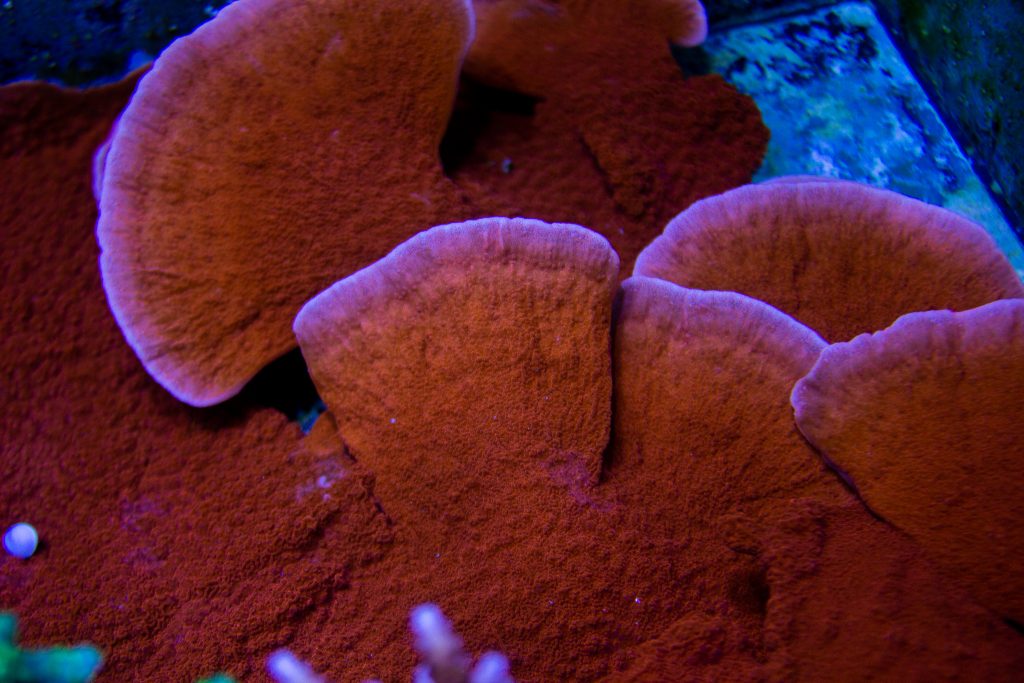
When can I add Montipora to my tank?
Montipora are one of the easier SPS corals to grow and can be a great way to try your tank with SPS coral. Most Montis require fairly stable water parameters and tank levels but have proven to be fairly resilient. Because of this most tanks typically can start growing Montis after 6 months of setting up your tank. However, this amount of time does vary from tank to tank. We would recommend starting with an easy beginner LPS or Soft corals from our list of beginner corals.
Dry Rock
If you started your tank with dry rock you will most likely have to wait close to 6 months to a year before you will be able to successfully keep anything alive. This is because dry rock can leach phosphate into the water for a very long time. Montis do best in a more established tank but are a good way to test if your tank is ready for other SPS corals such as Acropora.
Live Rock
If you started your tank with live rock that process can be dramatically shorter. However, be aware that just because your levels are where they should be, does not mean that your tank is actually ready for any corals. We recommend introducing LPS or Soft corals first with any
new system. After having success with LPS and Soft coral for a while you can begin to introduce easy SPS corals like Montipora. Acros should be the last thing you try to add to your system.
Montipora FAQs
What is Montipora corals?
Acropora is a genus of Small Polyp Stony corals (SPS) and is often referred to as “Montis”. They grow hard carbonite skeletons and have rigid structures. Montipora are covered in small little polyps that they use to absorb nutrients and food.
Can Montipora touch each other?
Most Montipora can touch and often will stop growing in that direction once they start to touch.
Can bleached Montipora recover?
When Montipora bleach it is often due to temperature swings or lighting changes. Most montis are very resilient and will bounce back from slight bleaching or browning if under stable and optimal conditions.
How do I know if my Montipora coral is healthy?
Some key indicators that your Montipora coral is healthy include polyp extension, healthy coloration, and new growth. Sometimes corals will go through a phase where they do not grow as much but as long as your monti still has good polyp extension and or good coloration, your monti should eventually start growing again.
How to acclimate Montipora?
Acclimating new Acropora can increase the rate of survival. It only takes a few minutes to do and is well worth it.
1) While still in the bag, place your coral inside of your tank to float for 10 minutes. This allows the water temperature in the bag to become consistent with your tank water.2) Remove your coral from the bag and place the coral and the water inside in a clean bucket designated for aquarium use.
3) Fill your bucket with 50% water from your tank and 50% water from the bag. (use all of the water from the bag)
4) Now is the perfect time to treat your coral with a coral dip in order to get rid of any unwanted hitchhikers.
5)After dipping and rinsing off your coral, you can place your coral in your tank. We recommend placing corals lower in your tank and moving them up slowly to find a happy spot in your tank. Every coral on our site has instructions on recommended placement requirements. Please, refer to the product page for specific requirements.
How to dip Montipora?
Most coral dips are too potent and often kill or stress out Montipora. We recommend that you use Bayer Advanced Complete Insect Killer when dipping montipora. It does the best job with the least amount of harm to your corals in our experience.
When to add Montipora?
Montipora need an established tank however, they can be one of the first SPS corals that you can try. They are very resilient and great growers. Monitpora Digitata and Caps are typically the best to start with. We recommend that you have success with other LPS and Softy corals first before trying Montis. Your tank should be between 6 months and a year before you add any Monitpora.
Are Montipora hard to keep?
Montipora can be hard to keep but in general, most montipora are a great intermediate coral. They are a good coral for beginner SPS tanks but should not go in a new tank. They can bounce back from a lot of stress but will thrive in a cleaner and established system.
